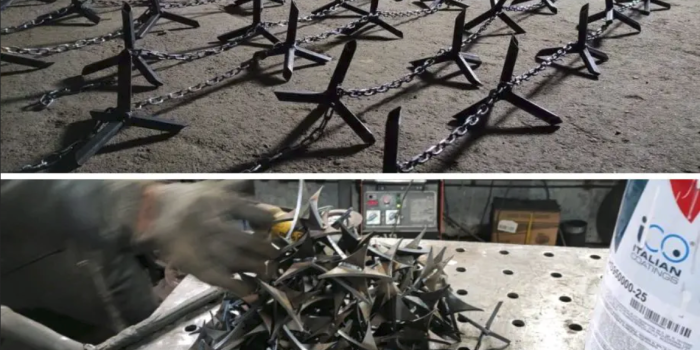In the ongoing conflict between Ukrainian forces and Russian invaders, a new and unconventional tactic has emerged: the use of caltrops, ancient aerial denial weapons, to impede Russian vehicles. Caltrops, historically deployed to hinder advancing cavalry and infantry, are now being scattered in the paths of Russian convoys, causing tire blowouts and rendering the vehicles vulnerable. This tactic is further augmented by the deployment of low-cost quadcopter drones armed with explosives or artillery to finish off disabled vehicles.
What distinguishes this recent utilization of caltrops is the deployment method. Ukrainian forces employ specialist drones to scatter the caltrops under the cover of night, maximizing their effectiveness. Once the caltrops are in place, wheeled vehicles traveling over them suffer tire damage, severely restricting their mobility and making them easy targets for subsequent attacks.
Russian social media posts acknowledge the effectiveness of this strategy, noting instances where vehicles were halted by caltrops and subsequently destroyed by artillery or kamikaze drones. Despite encountering these obstacles, some Russian vehicles managed to continue moving, albeit at reduced speeds, highlighting the disruptive impact of the caltrops on their operations.
“Now the Armed Forces of Ukraine are actively dropping such ‘thorns’ on the roads used by our troops. According to their plan, after a puncture, the car stops and is destroyed by artillery fire or kamikaze drones,” Russian social media posts have said about the new tactic.
“Yesterday we also ran over such thorns, but continued to move to a safe place. To give credit to the ‘Tiger,’ with exactly the same wheel as in the photo, we drove 40 kph,” the post continued.
Interestingly, the origin of these caltrops traces back to blacksmiths working for a company called “Art of Steel,” which transitioned from producing medieval armor to mass-producing caltrops. These caltrops, composed of six-inch nails chained together, proved effective in impeding vehicles.
The histroy of caltrops extends over millennia, reaching as far back as their inaugural deployment during the ancient clash at Gaugamela in 331 BC. Across epochs, caltrops have featured prominently in diverse military engagements, including their utilization in the context of World War 2. These enduring implements persist as vital components of contemporary warfare, standing alongside modern analogs like spike traps.
The reintroduction of caltrops into the modern battlefield showcases the adaptability of ancient weaponry in contemporary conflicts. Coupled with advancements in drone technology and artillery, the caltrop-drone strategy presents a formidable challenge for Russian forces. The effectiveness of this tactic raises questions about how Russian forces will respond and adapt to counter it, underscoring the dynamic nature of modern warfare tactics.


